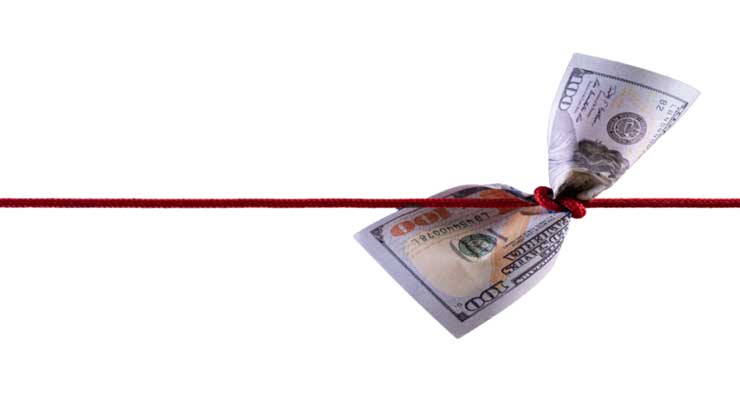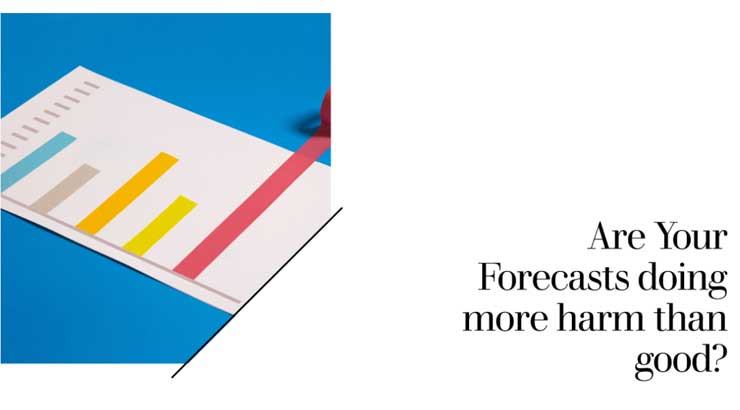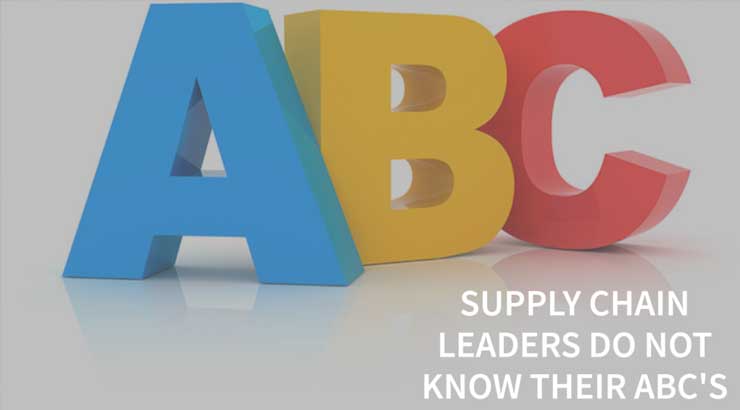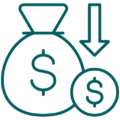Strategic Objectives
Cash Flow
We will compare your inventory turnover rates against industry benchmarks to estimate excess inventory levels. Using assessment tools, we’ll swiftly pinpoint the underlying issues contributing to excess inventory and facilitate effective integration solutions.
My Cash Flow Project Summary
Number of Projects
6
Average % Improvement
50%
Average $ Improvement
$6.0m
Average ROI
255
My Cash Flow Related Articles
Fix this 1 forecasting practice and improve your supply chain immediately and forever!
 Forecast Bias unnecessarily causes either excess inventory or shortages, depending upon in which direction the bias exists. This is the worst type of forecast inaccuracy because it is induced by management practices.
Forecast Bias unnecessarily causes either excess inventory or shortages, depending upon in which direction the bias exists. This is the worst type of forecast inaccuracy because it is induced by management practices.
Bias is when the forecast is consistently over or under actual demand. The other type of forecast inaccuracy is random variation, in which actual demand fluctuates above or below the forecast each month. Random variation is natural and cannot be eliminated, but it can be reduced through process improvements.
Read More…
 Fix this 1 forecasting practice and improve your supply chain immediately and forever!
Fix this 1 forecasting practice and improve your supply chain immediately and forever!
Part 1: Unlock all that cash tied up in inventory
 During these challenging times, many organizations are experiencing cash flow pressures. For that reason, I have published a list of 50 practices that will quickly and sustainably reduce inventory levels. Quickly because they do not require investment in expensive technology. These tools focus on using your head, not your wallet. Sustainably because they are all about improving the “critical few” process gaps, not short term gimmicks, such as refusing supplier deliveries at quarter end.
During these challenging times, many organizations are experiencing cash flow pressures. For that reason, I have published a list of 50 practices that will quickly and sustainably reduce inventory levels. Quickly because they do not require investment in expensive technology. These tools focus on using your head, not your wallet. Sustainably because they are all about improving the “critical few” process gaps, not short term gimmicks, such as refusing supplier deliveries at quarter end.
Read More…
 Part 1: Unlock all that cash tied up in inventory
Part 1: Unlock all that cash tied up in inventory
Are your Forecasts Doing More Harm than Good?
 Forecast value added (FVA) is a tool to measure the value of all the organizational effort spent on developing the forecast. FVA analysis starts with a “naive” forecast—that is, a forecast created by simple means that takes no time at all. The most common approach is to take last month’s demand and use it as the forecast. Alternatively, in an environment with seasonal sales, the forecast could be the actual demand from the same month last year. The difference in accuracy between your published forecast and the result of a naive method is how we calculate the value added by your efforts.
Forecast value added (FVA) is a tool to measure the value of all the organizational effort spent on developing the forecast. FVA analysis starts with a “naive” forecast—that is, a forecast created by simple means that takes no time at all. The most common approach is to take last month’s demand and use it as the forecast. Alternatively, in an environment with seasonal sales, the forecast could be the actual demand from the same month last year. The difference in accuracy between your published forecast and the result of a naive method is how we calculate the value added by your efforts.
Read More…
 Are your Forecasts Doing More Harm than Good?
Are your Forecasts Doing More Harm than Good?
One Strategy to transform inventory turns and supply risk within weeks!
 Is your organization equipped with readily available data and simple practices, yet not fully capitalizing on the opportunity to enhance its supply chain performance? Each edition of this newsletter presents a new strategy that you can implement immediately, allowing you to see tangible results within weeks.
Is your organization equipped with readily available data and simple practices, yet not fully capitalizing on the opportunity to enhance its supply chain performance? Each edition of this newsletter presents a new strategy that you can implement immediately, allowing you to see tangible results within weeks.
Read More…
 One Strategy to transform inventory turns and supply risk within weeks!
One Strategy to transform inventory turns and supply risk within weeks!
One little known practice to expedite your journey to 95% inventory record accuracy
 These days, most supply chains have had to overcome major supply risk issues, due to longer, less predictable supplier lead times. One material shortage can shut down the plant, and cause customer delays and missed revenue targets. Therefore, it is truer than ever that your inventory record accuracy (IRA) must be very high. In this article, I will introduce These days, most supply chains have had to overcome major supply risk issues, due to longer, less predictable supplier lead times. One material shortage can shut down the plant, and cause customer delays and missed revenue targets. Therefore, it is truer than ever that your inventory record accuracy (IRA) must be very high. In this article, I will introduce a little-known practice that will help you achieve just that.
These days, most supply chains have had to overcome major supply risk issues, due to longer, less predictable supplier lead times. One material shortage can shut down the plant, and cause customer delays and missed revenue targets. Therefore, it is truer than ever that your inventory record accuracy (IRA) must be very high. In this article, I will introduce These days, most supply chains have had to overcome major supply risk issues, due to longer, less predictable supplier lead times. One material shortage can shut down the plant, and cause customer delays and missed revenue targets. Therefore, it is truer than ever that your inventory record accuracy (IRA) must be very high. In this article, I will introduce a little-known practice that will help you achieve just that.
Read More…
 One little known practice to expedite your journey to 95% inventory record accuracy
One little known practice to expedite your journey to 95% inventory record accuracy
How much excess cash is sitting in your warehouse?
 A common question for supply chain leaders is, “How well is your inventory turning, and how does that compare to peers in other industries?” However, in the life sciences sector, this question doesn’t come up as often or as intensely. Given that their gross profit margins are typically much higher than other industries, they tend to focus more on revenue growth and avoid the risk of stockouts.
A common question for supply chain leaders is, “How well is your inventory turning, and how does that compare to peers in other industries?” However, in the life sciences sector, this question doesn’t come up as often or as intensely. Given that their gross profit margins are typically much higher than other industries, they tend to focus more on revenue growth and avoid the risk of stockouts.
Read More…
 How much excess cash is sitting in your warehouse?
How much excess cash is sitting in your warehouse?
3 Great Strategies to Minimize C Item Pain

Read More…
 3 Great Strategies to Minimize C Item Pain
3 Great Strategies to Minimize C Item Pain
Supply Chain Leaders do not Know their ABC's!

Read More…
 Supply Chain Leaders do not Know their ABC’s!
Supply Chain Leaders do not Know their ABC’s!
What the milkman can teach us about inventory management excellence

Read More…
 What the milkman can teach us about inventory management excellence
What the milkman can teach us about inventory management excellence
Leverage Mine the Gaps to Transform Inventory Turns

Read More…







